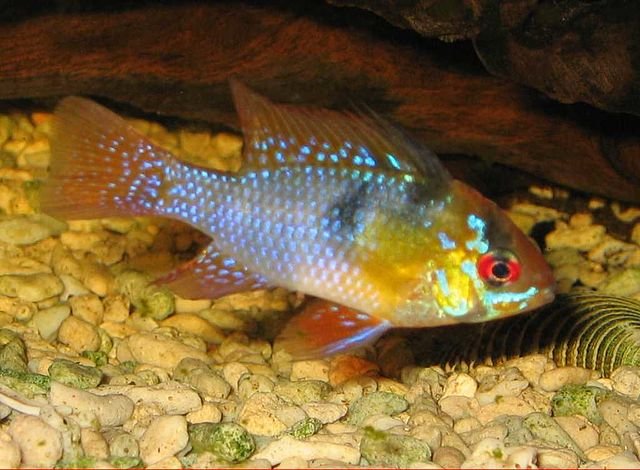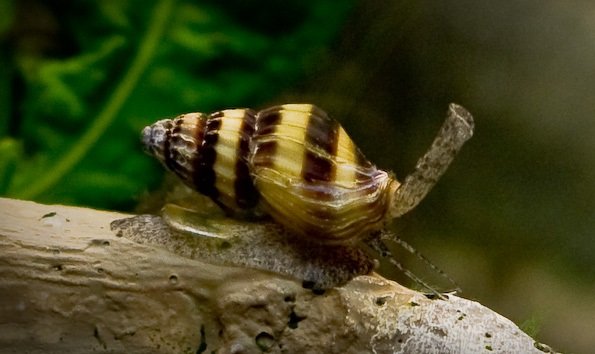In many animals, males pursue alternative tactics when competing for the fertilization of eggs. Some cichlid fishes from Lake Tanganyika breed in empty snail shells, which may select for extremely divergent mating tactics. A recent study at the Institute of Ecology and Evolution of the University of Bern shows that different male types within a species produce divergent sperm, specializing either in speed or longevity.
In the context of reproductive competition, males find different ways to enhance their odds. This may include flamboyant colours, gorgeous feathers, impressive antlers or conspicuous courtship displays. Now a team lead by Michael Taborsky at the Behavioural Ecology Division of the University of Bern found that the harsh competition for fertilizations can result in the production of specialized sperm in dependence of the particular mating tactic pursued by a male.
Dwarf males versus bourgeois territory holders
“Males of cichlid fish breeding in empty snail shells may exhibit a striking divergence in traits boosting their chances in the race for fertilizations”, Michael Taborsky says. In one of these species, large males collect empty snail shells in which females can breed. They may be extremely haremic, with up to 20 females breeding in their shells at the same time. The drawback is that these males have to grow big to be able to collect and transport these massive snail shells. This means that they have to wait up to two years before being able to reproduce, that is after passing the size threshold required for successful shell carrying. This opens a niche for an alternative mating tactic: tiny males may take advantage of the nest building effort of their large competitors and sneak into shells in which a female is spawning, attempting to fertilize her eggs from inside the shell. These males can start reproducing early in life, because it takes little time to grow to a size at which this parasitic strategy warrants success. Previous studies revealed that the alternative male types in this species result from a Mendelian, sex-linked genetic polymorphism.
The ejaculates of these divergent male types face different challenges. While dwarf male sperm are released next to the eggs deposited in the snail shell, the sperm of nest males have to travel at least two centimetres before reaching the eggs, because nest owners are much too big to enter the shell. Hence, if at all possible, males pursuing different tactics in this species should adjust the performance and longevity of their sperm accordingly. The current study reveals that they do.
Divergent sperm performance
Stay Always Informed
Join our communities to instantly receive the most important news, reports, and analysis from the aquaculture industry.
Measuring sperm performance at their race for the egg showed that dwarf male sperm swim swiftly and highly targeted right from the start, whereas nest male sperm start more slowly, staggering toward their target. This lessened performance pays off in the end. Taborsky’s group observed that while dwarf male sperm lose momentum quickly and die off after 2-3 minutes, nest male sperm persist for much longer, thereby surviving the long trip to the goal.
This study, which was published in Science Advances, hence showed that males pursuing different mating tactics within a species can produce highly specialized, divergent sperm that perform according to their particular fertilization conditions. This is obtained by different sperm morphology. Nest male sperm have larger heads, which allows storage of greater energy reserves for continued propulsion of the flagellum. Obviously, this comes at a cost of reduced directional swimming ability. Hence, the ecology of sperm competition can select for intricate adaptations at the level of gametes. The crucial point is to adjust to the specific challenges of the trip to the egg: either swim fast but die young, or stagger along at leisure but persist for much longer.
Reference:
A. Leleu, M. Jutzi, M. Rubin: The peculiar shapes of Saturn’s small inner moons as evidence of Michael Taborsky, Dolores Schütz,Olivier Goffinet, G. Sander van Doorn: Alternative male morphs solve sperm performance/longevity trade-off in opposite directions, Science Advances, 23. May 2018, in press
Source: Universität Bern
Editor de la revista digital AquaHoy. Biólogo Acuicultor titulado por la Universidad Nacional del Santa (UNS) y Máster en Gestión de la Ciencia y la Innovación por la Universidad Politécnica de Valencia, con diplomados en Innovación Empresarial y Gestión de la Innovación. Posee amplia experiencia en el sector acuícola y pesquero, habiendo liderado la Unidad de Innovación en Pesca del Programa Nacional de Innovación en Pesca y Acuicultura (PNIPA). Ha sido consultor senior en vigilancia tecnológica, formulador y asesor de proyectos de innovación, y docente en la UNS. Es miembro del Colegio de Biólogos del Perú y ha sido reconocido por la World Aquaculture Society (WAS) en 2016 por su aporte a la acuicultura.





